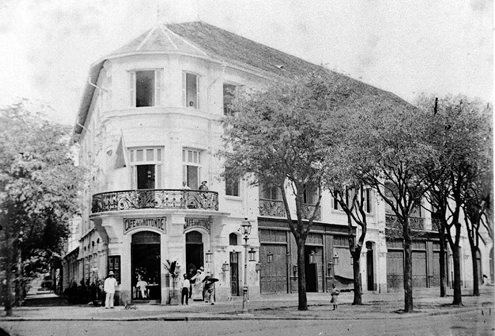In the late 1800s, Saigon, now known as Ho Chi Minh City, was a place of change and contrast. Under French colonial rule, this bustling city on the Saigon River was transforming from a small trading port into a major urban center. It was a time of new ideas, new buildings, and new ways of life, but it also held onto its rich cultural traditions.
Saigon was a city where East met West. Wide, tree-lined boulevards with European-style buildings stood alongside traditional Vietnamese houses and bustling markets. The aroma of freshly baked baguettes mingled with the fragrant spices of street food vendors. It was a place where you could sip a cup of coffee in a Parisian-style cafe or haggle for exotic goods in a crowded market.
The French left a lasting mark on Saigon. They built grand cathedrals like Notre-Dame Basilica, imposing government buildings, and elegant theaters. They introduced new technologies like electricity and the telegraph. They also brought their language and culture, which blended with the local traditions to create a unique Saigonese identity.
Everyday Life in Saigon
Life in Saigon was vibrant and diverse. The streets were filled with the sounds of rickshaws, horse-drawn carriages, and the chatter of vendors selling their wares. People from all walks of life went about their daily routines: merchants traded goods, fishermen cast their nets in the river, and women dressed in elegant ao dais strolled through the streets.
Saigon was a city on the rise. Its port was a hub for international trade, attracting merchants from all over the world. The population was growing rapidly, fueled by migration from other parts of Vietnam and beyond. New neighborhoods were springing up, filled with shops, restaurants, and homes.
Life in Saigon wasn’t always easy. There were outbreaks of disease, poverty, and social unrest. The French colonial government was often harsh and oppressive. But for many, Saigon offered opportunities for a better life. It was a place where people could find work, education, and a chance to improve their social standing.
Despite the challenges, Saigon’s rich cultural heritage remained strong. Traditional festivals like Tet Nguyen Dan (Lunar New Year) were celebrated with gusto. Vietnamese opera and folk music filled the air. Temples and pagodas provided solace and spiritual guidance.
































